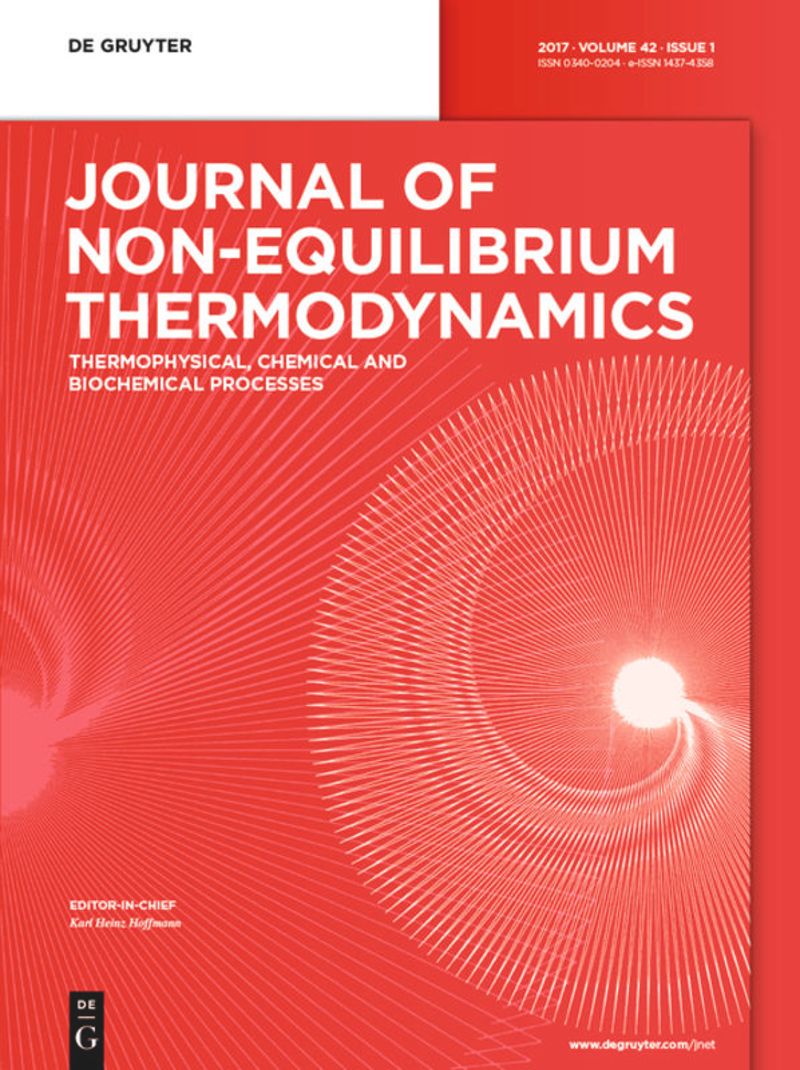从能量耗散中揭示酶的结构适应性
IF 4.2
3区 工程技术
Q1 MECHANICS
引用次数: 0
摘要
摘要虽然基因突变、自然选择和环境压力是酶进化的众所周知的驱动因素,但我们发现它们的结构适应受到能量耗散的显著影响。酶利用化学能做功,由于过程的不可逆性,这会导致自由能的损失。通过假设催化过程沿着势垒发生,我们描述了酶-底物复合物转化为酶-产物复合物的动力学,并计算了能量耗散。我们证明了耗散能量的行为是中间态能量的非单调函数。这一发现支持了我们的主要结果,即酶构型的进化可以最大限度地减少能量耗散,同时提高动力学和热力学效率。我们的研究为酶进化的复杂过程提供了新的见解,并强调了能量耗散在形成结构适应中的关键作用。本文章由计算机程序翻译,如有差异,请以英文原文为准。
Uncovering enzymatic structural adaptations from energy dissipation
Abstract While genetic mutations, natural selection and environmental pressures are well-known drivers of enzyme evolution, we show that their structural adaptations are significantly influenced by energy dissipation. Enzymes use chemical energy to do work, which results in a loss of free energy due to the irreversible nature of the process. By assuming that the catalytic process occurs along a potential barrier, we describe the kinetics of the conversion of enzyme-substrate complexes to enzyme-product complexes and calculate the energy dissipation. We show that the behaviour of the dissipated energy is a non-monotonic function of the energy of the intermediate state. This finding supports our main result that enzyme configurations evolve to minimise energy dissipation and simultaneously improve kinetic and thermodynamic efficiencies. Our study provides a novel insight into the complex process of enzyme evolution and highlights the crucial role of energy dissipation in shaping structural adaptations.
求助全文
通过发布文献求助,成功后即可免费获取论文全文。
去求助
来源期刊
CiteScore
9.10
自引率
18.20%
发文量
31
审稿时长
1 months
期刊介绍:
The Journal of Non-Equilibrium Thermodynamics serves as an international publication organ for new ideas, insights and results on non-equilibrium phenomena in science, engineering and related natural systems. The central aim of the journal is to provide a bridge between science and engineering and to promote scientific exchange on a) newly observed non-equilibrium phenomena, b) analytic or numeric modeling for their interpretation, c) vanguard methods to describe non-equilibrium phenomena.
Contributions should – among others – present novel approaches to analyzing, modeling and optimizing processes of engineering relevance such as transport processes of mass, momentum and energy, separation of fluid phases, reproduction of living cells, or energy conversion. The journal is particularly interested in contributions which add to the basic understanding of non-equilibrium phenomena in science and engineering, with systems of interest ranging from the macro- to the nano-level.
The Journal of Non-Equilibrium Thermodynamics has recently expanded its scope to place new emphasis on theoretical and experimental investigations of non-equilibrium phenomena in thermophysical, chemical, biochemical and abstract model systems of engineering relevance. We are therefore pleased to invite submissions which present newly observed non-equilibrium phenomena, analytic or fuzzy models for their interpretation, or new methods for their description.

 求助内容:
求助内容: 应助结果提醒方式:
应助结果提醒方式:


